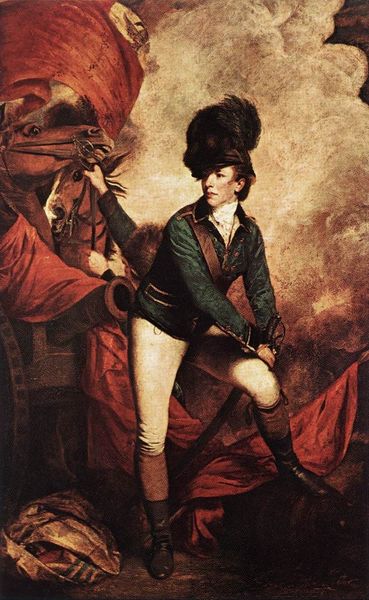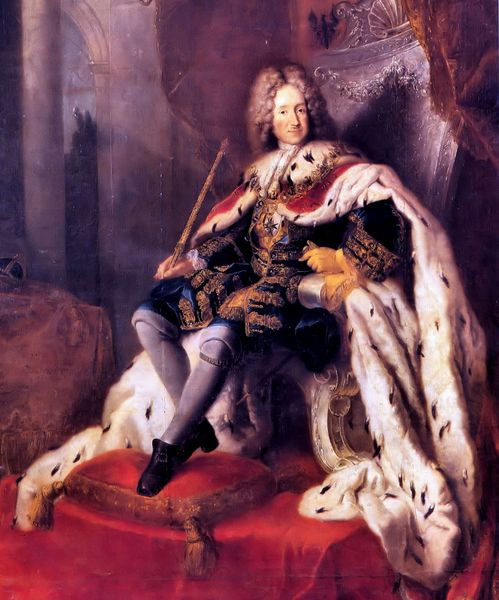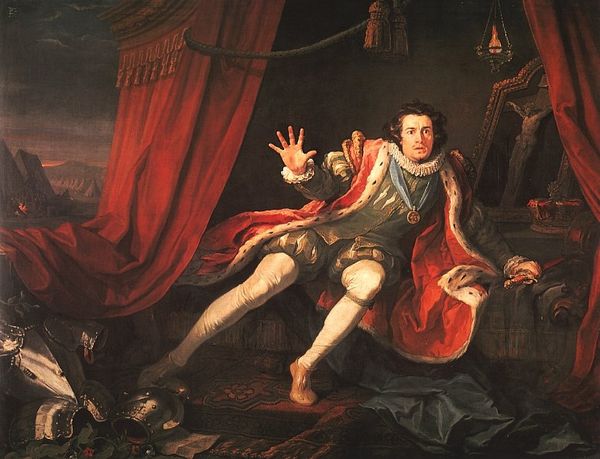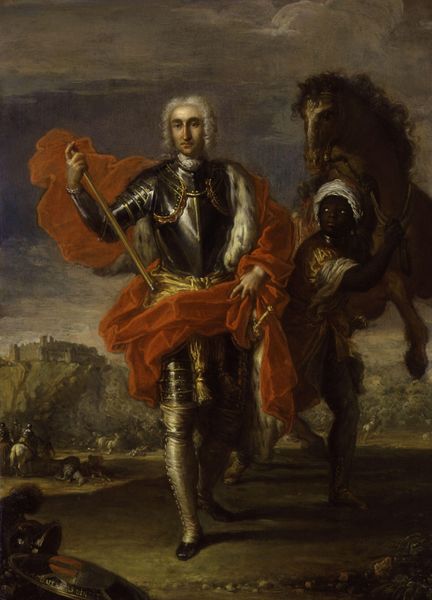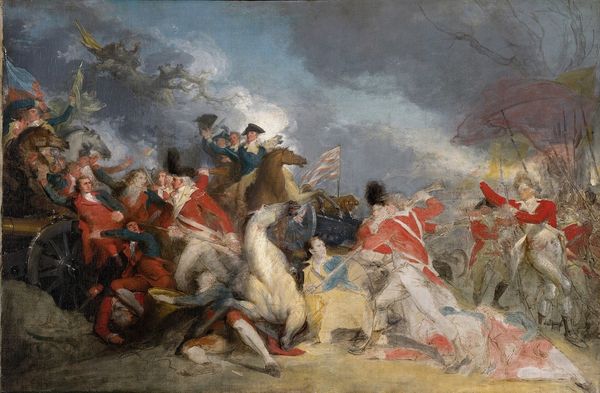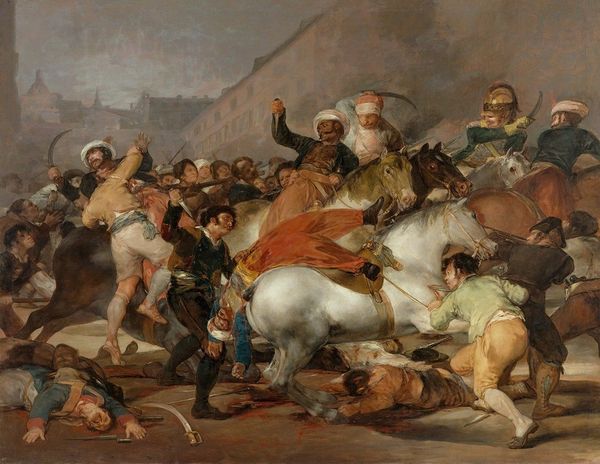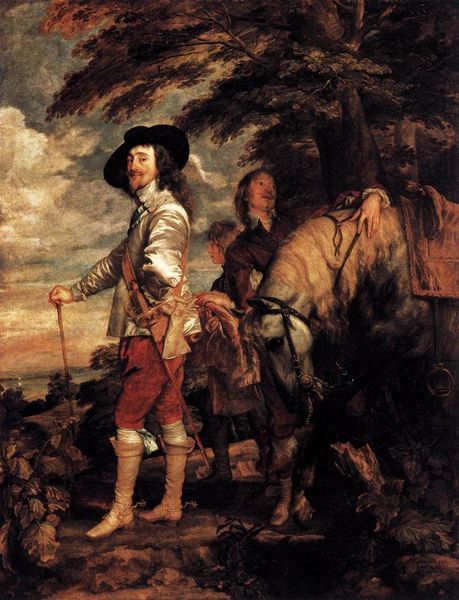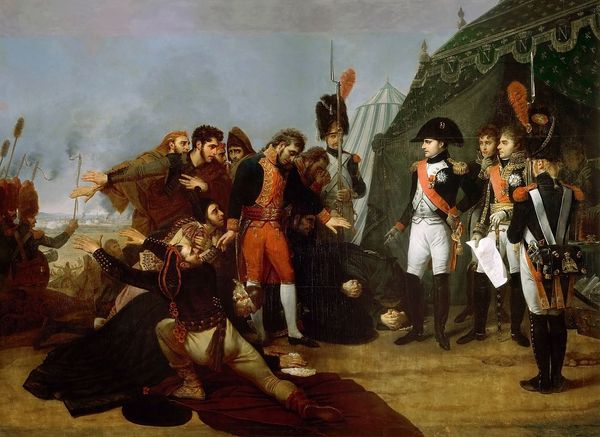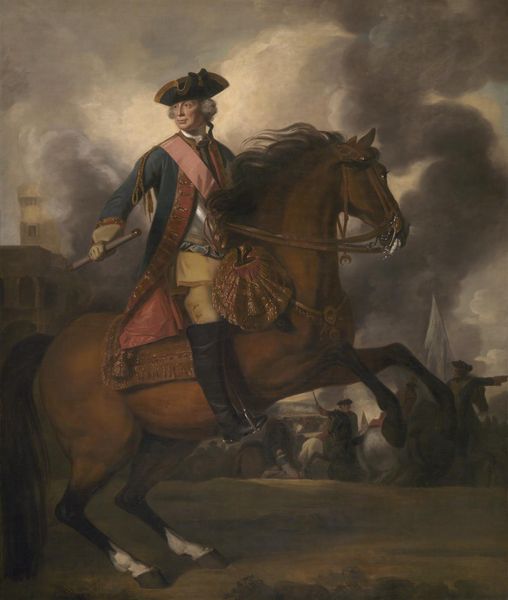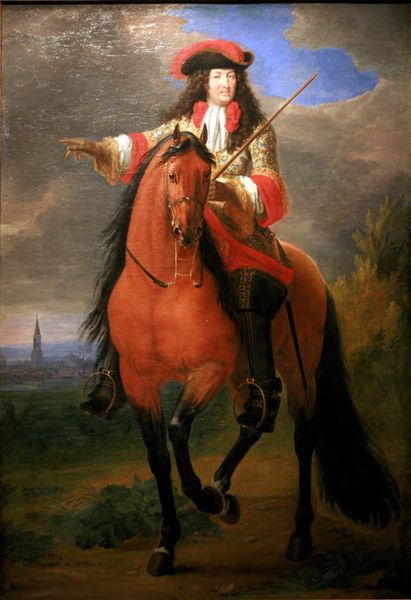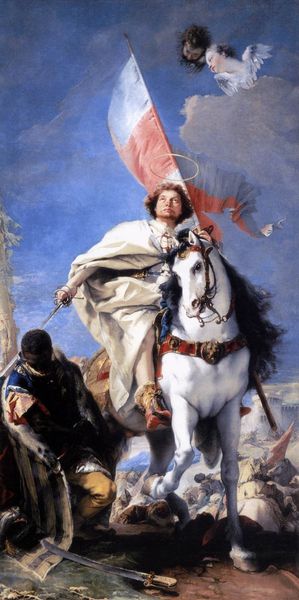
oil-paint
#
portrait
#
oil-paint
#
landscape
#
figuration
#
oil painting
#
romanticism
#
cityscape
#
genre-painting
#
history-painting
Dimensions: 180 x 267 cm
Copyright: Public domain
Editor: Just look at that arrogance! It’s all there in his posture, isn’t it? Curator: Indeed. This is Francisco de Goya's portrayal from 1801 of Manuel Godoy, the Duke of Alcudia, often dubbed the 'Prince of Peace.' Editor: "Peace" ironically seems absent here, looking at the battlefield setting. But more than anything, I am struck by the symbolism attached to that Portuguese flag next to him. Is that meant to indicate victory or something else entirely? Curator: Well, it's more complex. Considering Goya's role as a court painter, we need to dissect the layers of representation here. Notice the rendering of his opulent garments using oil paint? Each element reveals something about status, power, and even political maneuvering. Editor: Right, but the Portuguese flag seems out of place for someone styled the "Prince of Peace." Shouldn’t peace be symbolised by neutral items or shared emblems, rather than a victor's spoils? Curator: It signifies, perhaps, an idealized and constructed notion of victory amid turbulent times. It is worth noting how the materials of the portrait themselves were consumed, contributing to Goya’s career but also broadcasting an elaborate message of power for his subject. Editor: So, in a sense, it's a propagandistic symbol, reinforcing his status through Goya's craftsmanship. It definitely adds a dimension of national identity to the portrait—but somewhat clumsily! It doesn’t strike me as peaceful at all. The imagery used hints at conflict. Curator: It certainly showcases the power and the social order through its symbols, from Godoy's garb down to the very pigments employed. It compels us to reflect on not only his actions but also Goya's role as both an artist and artisan under those societal pressures. Editor: Seeing the painting now, understanding both the symbols and the underlying purpose makes it more evocative of conflict, power, and controlled representation, rather than the “peace” they were ostensibly claiming. Curator: Quite so, analyzing the process illuminates so much—materially and socially! We have gone behind the Duke’s portrayal to find how Goya’s craft contributed to this fascinating historical document.
Comments
No comments
Be the first to comment and join the conversation on the ultimate creative platform.
